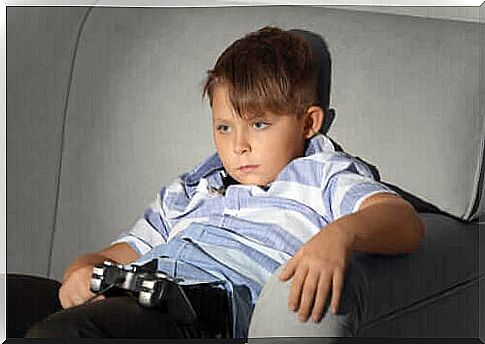Lack Of Physical Activity In Children Is A Growing Epidemic

Lack of physical activity in children is a growing problem almost everywhere in the world. In fact, it is already classified as an epidemic. This situation is due to several factors and is also a potential trigger for future health problems.
A recent report created by the World Health Organization (WHO) says that about 70% of boys under the age of 10 and 88% of girls do not exercise enough for their age. This means that an average of 79% of children are affected by a lack of physical activity.
Physical activity plays a significant role in health for people of all ages. However, it is necessary during childhood for normal development. For this reason, there is much concern in the medical field about the gradual increase in the lack of physical activity in children. In this article, we take a closer look at this widespread epidemic.
Lack of physical activity in children

Lack of physical activity is defined in many ways. However, one of the most accepted is the definition in which a person is considered to be little mobile when he burns less than 150 kilocalories per day in moderate levels of physical activity.
With regard to children’s physical activity, the World Health Organization has found that a child moves little if he or she engages in physical activity for less than 60 minutes a day. Several studies show that a large proportion of children in the Western world do not reach this daily activity quota.
Worst of all, children’s lack of physical activity is often associated with other harmful factors, such as poor nutrition. This combination creates conditions where there are more obese children than ever with all the consequences associated with it.
Risk factors
Exercise during childhood is a crucial factor in the development of psychomotor skills. Getting around also helps children explore themselves and the world around them. This in turn has a strong impact on a child’s intellectual and psychosocial development.
Why is child immobility so prevalent today? Here are some of the factors that contribute to it:
- Physiological factors. The closer children get into adolescence, the less physical and more intellectual activities they tend to engage in.
- Sociocultural factors. Changes in games and forms of entertainment, as well as a lack of parental presence, affect children’s physical activity. Movement is also not sufficiently stimulated in children.
- Psychological factors. Lack of physical activity limits the development of skills. This in turn makes children more stationary because they consider themselves incapable of doing activities that require physical skills.
Effects of lack of physical activity in children

Lack of physical activity in children has negative and in some cases long-term effects. The most important of these include:
- Overweight and obesity. Lack of exercise, especially if it is accompanied by inadequate nutrition, leads to overweight and obesity. This increases the risk of cardiovascular disease and diabetes.
- Stagnation of psychosocial development. Studies have shown that children who are not physically active are less confident, have poorer social skills, and generally have poorer academic performance.
- Development of addictive behavior. New forms of technology have an addictive effect, especially in the minds of immature children. This limits their normal psychological development and can lead to other personality or behavioral problems.
Things to keep in mind
It is no exaggeration to say that a lack of physical activity can significantly impair a person’s life. If a child does not develop physical and intellectual skills commensurate with his or her normal age, his or her life will be built within the severe limitations. If problems such as overweight or obesity occur, the child is at serious risk of developing chronic diseases.
Adults need to give children options for physical activities. Parents and teachers both have a significant role to play in this. You can fight a little mobile lifestyle with lifestyle changes. Children are inherently inclined to engage in physical activities and their early years of life are very important in this regard. Adults should therefore commit to supporting children so that children can explore the world by moving and playing with other children and by being in touch with nature.









